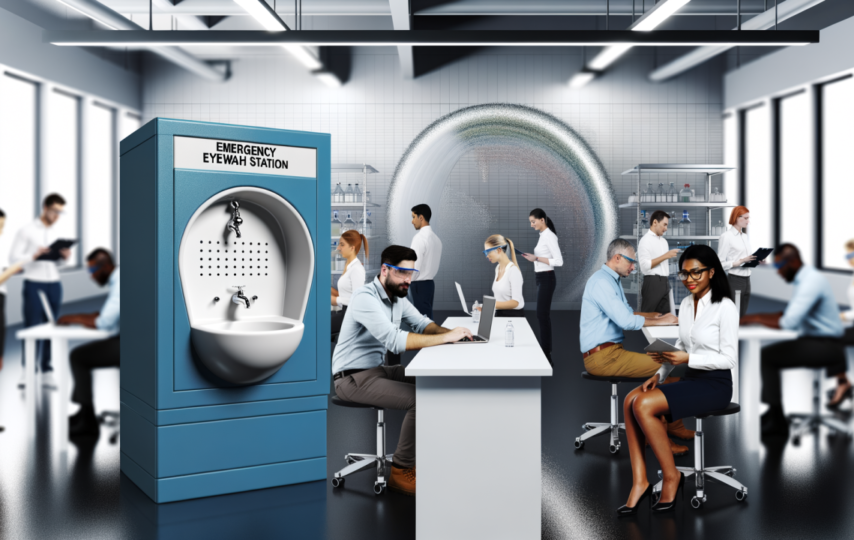Workplace safety is an integral component of any business operation. Hazards exist in various forms across different industries, and the minimisation of risk to health and safety is paramount. Two pivotal aspects of managing these risks effectively are the proper storage of liquified petroleum gas (LPG) and the availability of emergency eyewash facilities.
Understanding the Importance of Safe LPG Storage
LPG is a common fuel source in many industries due to its efficiency and cost-effectiveness. However, due to its flammable nature, it poses significant risk factors that necessitate strict safety measures. Ensuring the safe storage of LPG is crucial to prevent accidental leaks, which can lead to fires, explosions, and severe injuries.
Safe lpg storage solutions are designed to mitigate the risk of LPG-related incidents. These storage options often include secure cages that are compliant with regulations and are constructed from materials that offer protection against impact and environmental factors. They are also typically designed to provide sufficient ventilation to disperse any potential leaks and are clearly labelled to facilitate easy recognition and cautious handling.
The Role of Portable Eyewash Stations in Emergencies
In the event of an exposure to hazardous substances, immediate decontamination is crucial. This is where portable eyewash stations become indispensable. Portable eyewash stations provide immediate access to facilities that can flush harmful substances from the eyes, reducing the risk of long-term injury or vision loss.
These units are especially advantageous in environments where permanent installation of eyewash stations is not feasible. Portable units can be stationed near temporary work sites or in areas where hazards are constantly shifting. Their mobility ensures that employees have access to essential first-aid equipment wherever they operate, demonstrating an organisation’s commitment to employee health and safety.
Incorporating Emergency Eyewash Stations within Safety Protocols
While portable eyewash stations offer flexibility and accessibility, fixed eye wash station installations are a critical feature of a well-designed safety environment. These stations should be situated in close proximity to hazardous work areas, allowing employees to reach them within seconds following an incident.
Fixed eyewash stations are connected to a continuous supply of potable water and are typically triggered by a simple mechanism that allows for hands-free operation. The design ensures that, once activated, they can deliver a steady flow of water for a sufficient duration to effectively rinse away contaminants. Regular testing and maintenance of these stations ensure they are always in optimal working order, which is essential for compliance and the wellbeing of employees.
Adhering to Compliance and Safety Standards
Effective management of hazards, including safe LPG storage and the installation of eyewash stations, must align with local regulations and safety standards. These standards outline specific requirements for the construction, placement, and maintenance of safety equipment and are developed to ensure the highest level of safety in the workplace.
Organisations must regularly review their compliance with these standards to guarantee that safety protocols remain effective. This involves conducting risk assessments, worker training, and equipment inspections, as well as updating safety measures in accordance with advances in safety technology and changes in legislation.
Employee Training and Awareness
To maximise the effectiveness of safety equipment like LPG storage cages and eyewash stations, employees must be trained on their correct usage. Awareness programs should include instruction on identifying potential hazards, proper handling of LPG cylinders, and immediate first-aid responses using eyewash facilities.
Regular drills and safety briefings can ensure that all employees are familiar with the location and operation of safety equipment. Employee involvement in safety audits and reviews also fosters a culture of safety and encourages proactive contributions to workplace security.
Industry-Specific Considerations for LPG Storage and Eyewash Facilities
Different industries may present unique challenges when it comes to LPG storage and the requirement for eyewash stations. In sectors where LPG usage is frequent, enhanced measures may need to be taken to ensure safe storage and handling. Similarly, industries dealing with an abundance of hazardous substances may require more extensive deployment of eyewash facilities.
Tailoring safety measures to address the specific needs of an industry is crucial for an effective safety protocol. This may involve specialized equipment, additional training, or closer liaisons with health and safety authorities to align industry practices with best safety practices.
The Cost of Safety Versus the Costs of Negligence
Investing in quality LPG storage solutions and eyewash stations is a proactive step towards safeguarding personnel and property. The initial costs associated with implementing these safety measures are far outweighed by the potential costs of accidents, including medical expenses, legal fees, property damage, and loss of business reputation.
An organisation that prioritises workplace safety not only upholds its legal and ethical responsibilities but also demonstrates to its employees and customers that it values human life and wellbeing. This commitment can have a positive impact on employee morale and customer perceptions, which in turn can lead to increased loyalty and business growth.
Conclusion
Safe LPG storage and readily accessible emergency eyewash stations are cornerstone elements of workplace safety. They exemplify an organisation’s commitment to mitigating risks and protecting its workforce. By adhering to safety regulations, ensuring compliance, and fostering a culture of safety awareness, businesses can create a secure environment conducive to productivity and success.
Continual evaluation and enhancement of safety measures, coupled with training and awareness programs, are necessary to maintain a high standard of workplace safety. As businesses grow and industries evolve, the emphasis on safety protocols like proper LPG storage and the implementation of eyewash stations must be a perpetual priority, safeguarding the well-being of employees and the integrity of business operations.








